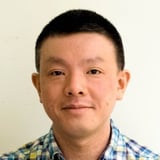Summary
The metaverse, virtual reality, Web 3.0, distributed infrastructure, the Internet of Things, wearable computing, and AI: all these things are going to change the face of accessibility over the next 10 years. In this talk, Samuel Proulx, Fable’s Accessibility Evangelist, will give you an overview of what the current landscape looks like at the frontier of accessibility and assistive technology. Where’s the research taking us? What might be coming down the pipe?
Key Insights
-
•
Early computing's text-based nature made accessibility simpler through braille and text interception.
-
•
Transition to graphical user interfaces complicated accessibility, requiring third-party assistive tech that became costly and specialized.
-
•
Apple’s VoiceOver and built-in accessibility APIs marked a turning point, making touchscreens accessible and driving industry innovation.
-
•
Accessibility is now an expected OS/browser responsibility, not a niche or third-party add-on.
-
•
Gaming, VR, and AR remain largely inaccessible with minimal built-in support, echoing earlier doubts about accessibility adoption.
-
•
Major companies like Apple, Microsoft, Google, and Meta are actively researching accessibility solutions for XR and 3D environments.
-
•
Artificial intelligence poses new accessibility opportunities and challenges, especially around privacy, bias, and inclusivity.
-
•
Cloud computing cycles back some centralization challenges for accessibility, with users unable to control updates or local customization.
-
•
Accessibility advancements benefit all users by unlocking broader innovation and fluid, natural interactions across product lines.
-
•
The first companies to solve accessibility issues for new technologies will gain long-term market leadership advantages.
Notable Quotes
"Those who don’t understand history are doomed to repeat it."
"My father made headlines as a blind man graduating with a computer science degree because it was considered unusual and abnormal."
"In early computing, all you had to do was intercept text and put it in braille or text-to-speech, because everything was text-based."
"People said graphical user interfaces are bad for accessibility and that blind people would have to stick to command lines forever."
"Apple solved the problem of making touchscreens accessible by inventing VoiceOver and providing rich APIs for developers."
"It took competitors over seven years to catch up to Apple’s accessibility features like Siri, dark mode, and multitouch."
"Accessibility is no longer an unusual hack; it is the responsibility of all of us to create accessible products."
"Gaming is where the graphical user interface once was—still largely inaccessible, with assistive tech as third-party add-ons."
"Artificial intelligence promises new independence for people with disabilities but raises questions of bias and privacy."
"The first to solve accessibility for new modalities will be market leaders for decades to come."
Or choose a question:
















More Videos

"I underestimated how much identity our team tied to UX and how scary that loss felt to many of them."
Nalini KotamrajuResearch After UX
March 25, 2024

"Not belonging anywhere meant that I had access everywhere."
Dean BroadleyNot Black Enough to be White
January 8, 2024

"When we start changing our behavior, we start changing the voices and behavior around us."
Denise Jacobs Nancy Douyon Renee Reid Lisa WelchmanInteractive Keynote: Social Change by Design
January 8, 2024

"People problems find their way to design ops because we’re known problem solvers and people run to us when morale is low."
Kim Fellman CohenMeasuring the Designer Experience
October 23, 2019

"The most common way people give up their power is by thinking they don’t have any."
George AyeThat Quiet Little Voice: When Design and Ethics Collide
November 16, 2022

"Visual style isn’t just enough to make something feel cohesive."
Nathan CurtisBeyond the Toolkit: Spreading a System Across People & Products
June 9, 2016

"We want our culture to be about the outcome, not about who owns what or who’s doing what on a piece of work."
Greg PetroffThe Compass Mission
March 10, 2021

"Traditional design thinking and human-centered design rarely take localized nuances and global trends into account."
Chloe Amos-EdkinsA Cultural Approach: Research in the Context of Glocalisation
March 27, 2023

"85% of people were leaving after viewing only one page, showing severe bounce issues."
Mackenzie Cockram Sara Branco Cunha Ian FranklinIntegrating Qualitative and Quantitative Research from Discovery to Live
December 16, 2022
















